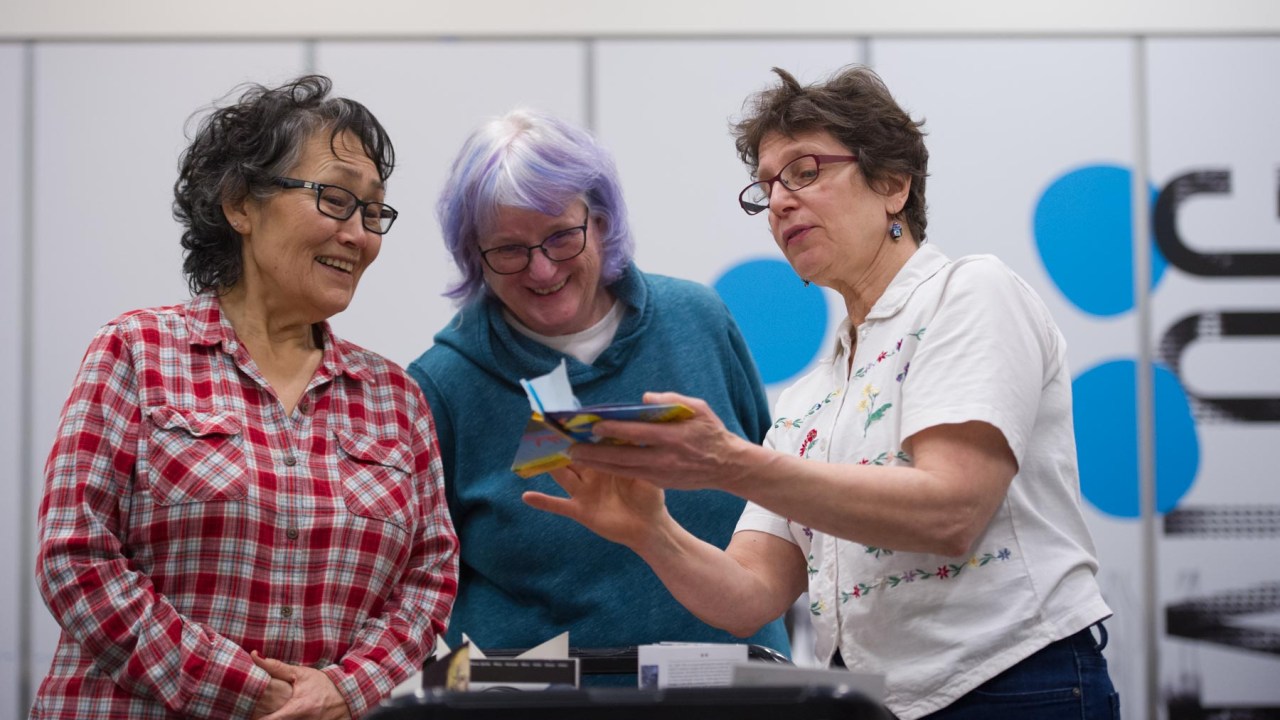
The creative aging movement is coming of age, and just in the nick of time. As of last year, 80 percent of state arts agencies across the United States reported a high or very high demand for creative aging programs in their state, which have taken the form of everything from nature journaling and memoir writing to drumming circles and the art of drag.
The thirst for access to specialized classes targeted to older adults shouldn’t be all that surprising. The number of older Americans is growing rapidly, and by 2035 there will be more adults over the age of sixty-five living in the country than children. Museums have both a strategic and ethical imperative to adjust their programming, accessibility, and internal operations both in light of this data and what medical, sociological, and economic research tells us about the role older adults play in contemporary society.
AAM’s newest report, Museums and Creative Aging: A Healthful Partnership, sponsored by Aroha Philanthropies, takes an in-depth, action-oriented look at these trends, issues, and opportunities. It advocates two interconnected strategies with the potential to advance the role that museums can take in society: 1) investing in high-quality programs that encourage healthy and active aging, a practice known as “creative aging,” and 2) working actively to combat society’s prejudices toward older people, an issue known as “ageism.” Practical and provocative, the report is designed to be a springboard to immediate actions museums can take to better serve a growing audience. Furthermore, it is intended to provoke constructive intergenerational discussions, especially in light of the field’s current reckoning with its longstanding racial and economic inequities.
The report is specifically targeted to museums with a close look at how educational programming for older adults is both a natural fit and a significant stretch for the field. You will find a great deal of useful data, plus chapters devoted to:
- Aging and Ageism in American Society: A deep dive into the demographics of aging and minefields of ageism, specifically in regard to women, the LGBTQ+ community, the workplace, and the COVID-19 pandemic. Can you guess, for example, the states with largest populations of older adults? And what are some of the biggest mistakes (legal or otherwise) that workplaces make in regard to someone’s age?
- Positive Aging: Growing movements that empower older adults to be active participants in society, including age-friendly communities, creative aging, and the ambitious Seeding Vitality Arts in Museums initiative developed by Aroha and AAM in 2018. Is positive aging just feel-good pop psychology, or is there something to it? Does developing a serious art practice after the age of fifty-five really help to improve brain neuroplasticity, and why? What pleasant surprises are we in for as we grow older, other than free coffee at the local donut shop (at the least the one around the corner from my house)?
- Case Studies from the Seeding Vitality Arts in Museums initiative: A look at how museums in places as diverse as Puerto Rico, Kentucky, Florida, Alaska, and Mississippi developed successful programs that used their unique assets to tap into needs in their communities. What kinds of challenges did museums that participated in the pilot rollout of the Seeding Vitality Arts in Museums initiative experience? How can creative aging programs dovetail with other DEAI initiatives? What do older people who participate in creative aging programs want museums to know?
- Lessons Learned: Concise recommendations that take into consideration what museums already know versus what they need to know in order to deliver high-quality creative aging programs both onsite and online. What elements need to be in place for museums seeking to develop and implement effective creative aging programs? Which simple fixes can assure that older adults benefit from online education? What can museums learn from older adults that can inform their approach to technological access for people of all ages?
- A Call to Action for the Future: A set of forward-thinking actions related to creative programming, human resources issues (including volunteer management), and potential partnerships. How can museums serve older adults beyond offering more classes and volunteer opportunities? What are some effective responses to ageism within a museum’s workforce, both paid and volunteer? What don’t museums yet know about how to design better experiences for intergenerational audiences?
Working closely with AAM, Aroha, and the case study museums, I wrote Museums and Creative Aging: A Healthful Partnership over a period of a year, and was thus able to document, in real time, the pivot from onsite to online workshops. While attending online workshops, conducting scores of interviews, and examining research reports from organizations like the National Institute of Health, World Health Organization, Stanford Center on Longevity, and the Milken Center on the Future of Aging, one of the surprising things I learned was how many harmful stereotypes exist about older adults. This misinformation not only perpetuates serious mental and physical health issues, but it prevents institutions like museums from reaching their potential as one of society’s most important bridges between generations.
I was also surprised (and delighted) by the movement’s emphasis on positive dialogue, joyful outcomes, and a word I hadn’t expected to pop up in so many of my interviews and interactions: “fun.” I hope that the stories, information, data, and calls to action in Museums and Creative Aging: A Healthful Partnership are as eye-opening and inspiring to you as they were for me.
You can download the report here.








Hi, Marjorie,
I want to congratulate you on the fine job you have done with the creative aging publication. I found it extremely interesting and well written, and hope that stimulates an ever-widening discussion in the field.
I also loved reading about your families own forays into the world of creative aging. How inspiring!
Best,
Bill Tramposch
Mendocino, Ca